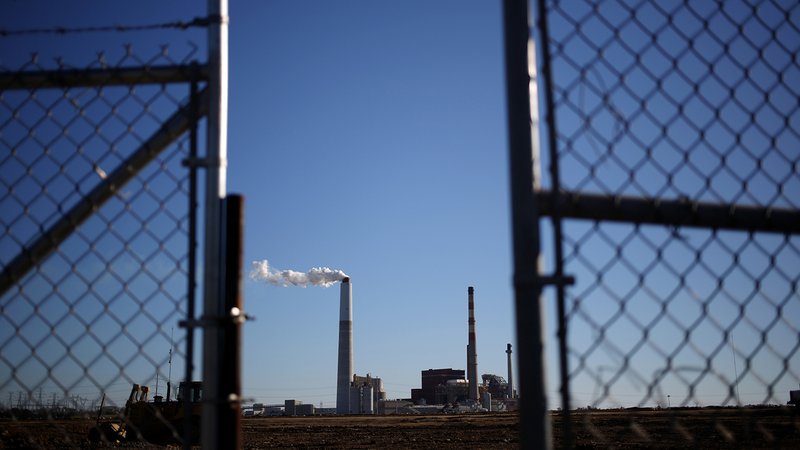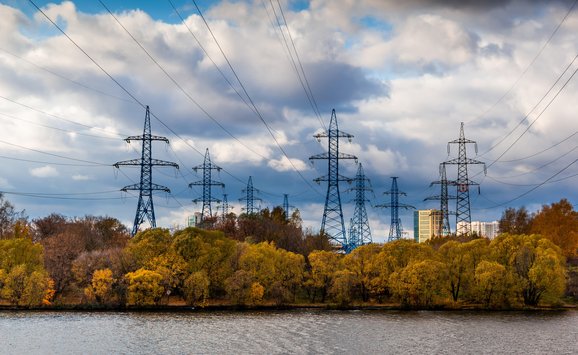This post is the first in a series of two summarizing recent efforts by members of government and industry aimed at encouraging the Trump administration to save existing coal and nuclear power plants in the Mid-Atlantic and Midwestern wholesale markets operated by PJM. This post describes the recent proposals, including the latest that rests on authorities set forth under the Defense Production Act of 1950. The second post will focus on the implications of relying on the Defense Production Act for efficient performance of wholesale electricity markets, with some thoughts on how those markets do or do not reflect national security issues and carbon impacts. We also comment on the likely consequences of exerting this authority.

The Trump administration is considering using a Truman-era statute to save certain coal and nuclear power plants in the nation’s largest competitive wholesale electricity market, which is operated by PJM (the grid operator in much of the Midwest and Mid-Atlantic states). These internal government deliberations come in response to the latest pleas by owners of financially stressed power plants in the Midwest, who have asked the president and his agencies to make good on campaign promises to save the coal industry.
With the urging of members of Congress and FirstEnergy Solutions, the White House and the Department of Energy are now considering requests to invoke the President’s extraordinary authorities for national security and the Secretary of Energy’s emergency authorities to help assure that the power plants in question remain in operation.
From our own perspective, the rationales for potential interventions into electricity markets to protect coal and nuclear generating units from becoming uneconomic (and retiring) in a low market price environment are distinct, and based on the differing attributes of the sources. Any action that the administration might take could have important ramifications for other participants in the federally regulated wholesale power market affected by such an action.
The conventional wisdom is that the underlying motivator for the Trump administration is to save coal plants. As we’ve observed elsewhere recently (here and here and here), the financial challenges faced by old coal plants in the PJM market stem from market fundamentals—and any action to support reliability, resilience, and environmental impacts should be addressed through market-design and system-wide approaches.
From our vantage point, if the administration ultimately takes action to save these plants in the near term, it demonstrates a willingness to disrupt markets for political purposes—versus intervention to serve national security interests or to address market failures.
There are important differences between existing nuclear plants and existing coal plants. Non-utility-owned (i.e., merchant) nuclear units operating in competitive wholesale markets suffer financially because such markets (including PJM) do not compensate these suppliers—either for the value to the nation of their zero-carbon electricity supply or for their contribution to maintenance of nuclear expertise and capability in the United States. [See Susan Tierney’s recent writing on this topic: here and here and here.] Appropriately designed policies or market mechanisms that address these market failures could help forestall potentially costly implications of retirement of these electricity resources that provide benefits to the nation that are not currently reflected in markets.
Pleas for Government Protection of Certain Power Plants
The past several months have been busy ones in terms of federal policy attention to the nation’s at-risk existing coal and nuclear generating units. For example, two days before it filed for bankruptcy protection on March 31, FirstEnergy Solutions Corporation asked Secretary of Energy Rick Perry to take action under Section 202(c) of the Federal Power Act and “find that an emergency condition exists” in the PJM region such that PJM enter into contracts to assure full compensation to at-risk merchant coal and nuclear units so that they do not retire. (FirstEnergy has recently announced retirements of three nuclear generating stations and some coal plants in Ohio, with potential further at-risk plants in Pennsylvania.)
Most recently, on April 18, Senator Joe Manchin (D-WV) sent a request to President Trump, asking him to exercise his powers under the Defense Production Act of 1950. This act could allow the president to intervene in markets in order to purchase “an industrial resource, material, or a critical technology item [that] is essential to the national defense.” This request followed similar entreaties by other members of Congress (here and here), including one by Representative David McKinley (R-WV) at an April 2018 House committee hearing in which he urged Secretary Perry to act upon his emergency authorities, or use “whatever legal power you have,” to keep the grid stable and secure by maintaining needed coal and nuclear units.
Both requests have followed Energy Secretary Perry’s September 2017 rulemaking proposal to the Federal Energy Regulatory Commission (FERC)—proposing that it approve new tariffs in “organized” wholesale markets operated by Regional Transmission Organizations (RTOs) so as to allow for full cost recovery for certain “fuel-secure” merchant generating units with a 90-day fuel supply on their premises. (This proposal, known as the “notice of proposed rulemaking” (NOPR) on grid reliability and resilience pricing, was submitted by the Secretary under Section 403 of the Department of Energy Reorganization Act.) After receiving substantial public comments on the proposal (including this modeling review of costs and environmental consequences by RFF colleagues, a study by one of us, and a DOE staff report on the topic), FERC found in January 2018 that it could not conclude that the current RTO tariffs were unjust or unreasonable. In that same order, FERC opened a new docket to investigate the resilience of the bulk power system in those RTO regions—a proceeding that is still underway at this time.
The latest request to invoke the Defense Production Act (described more fully below) comes as the third effort—after Secretary Perry’s NOPR under Section 403 and FirstEnergy’s Section 202(c) proposal to DOE—to use broad federal authorities to save existing, financially strapped merchant coal and nuclear plants operating in competitive electricity markets and to do so in the name of resilience, reliability, and national security.
Defense Production Act of 1950
In enacting the Defense Production Act 68 years ago (at a time when the nation’s security and economy were emerging in the post-World War II era and early in the Cold-War period), Congress made a number of findings. Among those, Congress found that American security depends on “the ability of the domestic industrial base to supply materials and services for the national defense and to prepare for and respond to military conflicts, natural or man-caused disasters, or acts of terrorism;” the “vitality of the domestic industrial base” depends upon the “protection and restoration of domestic critical infrastructure operations under emergency conditions;” and “national defense preparedness” requires the “availability of domestic energy supplies for national defense needs.”
The act, as now amended, mentions assurance of domestic productive capacity to meet “unique technological requirements,” and “to assure the availability of domestic energy supplies for national defense needs,” including by augmenting “reliance on renewable energy sources (including solar, geothermal, wind, and biomass sources), more efficient energy storage and distribution technologies, and energy conservation measures.”
Since amended in 1980, the act designates energy as a “strategic and critical material” provided that such designation does not give the president any new direct or indirect authority to set the mandatory pricing of fuels or electricity.
The act, however, does authorize the president to do a number of things, if he/she determines that an “industrial resource, material, or critical technology is essential for the national defense” and that US industry cannot deliver it in short order. In such a case, the act generally authorizes the president to “create, maintain, protect, expand, or restore domestic industrial base capabilities essential for the national defense” through reliance on purchase agreements for government use or for resale. The president may require that performance under contracts deemed “necessary or appropriate to promote the national defense” shall have priority over other contracts that a person or company holds.
That said, the president may not use these powers to control the distribution of non-critical materials in US commerce unless they are deemed essential to the national defense and if use of substitute materials to meet the national defense would create significant hardship.
Notably, the act directs that actions to carry out the purposes of the law “should be undertaken with due consideration for promoting efficiency and competition.” The president is prohibited from using the act to implement price controls without approval through a joint resolution of Congress.
A 2009 Congressional Research Service (CRS) review of the act’s implementation observed that it was originally crafted to be comprehensive in its coverage of economic activities during a wartime emergency. As time has passed, the economic scope has narrowed as the economy and the threats to national security have evolved. The CRS review goes on to argue that the globalization of economic activity can be seen either as supplanting the primarily domestic industrial base that the act was intending to protect or, conversely, that during times of crisis the need for such an act to support domestic resource availability is as strong as it ever was.
The act has been invoked in very specific circumstances in recent years for certain technologies found necessary for national security purposes. As recently as 2017 and 2018, for example, President Trump made findings under the act for a number of critical technologies, including insufficiencies of “trusted advanced photomasks” and of “shortfalls related to the following: adenovirus vaccine production capability; high strength, inherently fire and ballistic resistant, co-polymer aramid fibers industrial capability; secure hybrid composite shipping container industrial capability; and three-dimensional ultra-high density microelectronics industrial capability.”
Despite the invocations and findings under the act noted above, President Trump did not use his discretionary authority under the act with respect to addressing the massive and long-lived extraordinary blackouts in Puerto Rico that existed for months in the wake of Hurricane Maria, even though requests for such invocation were made by many members of Congress.






